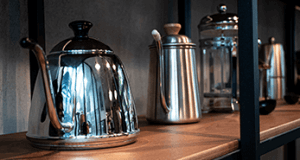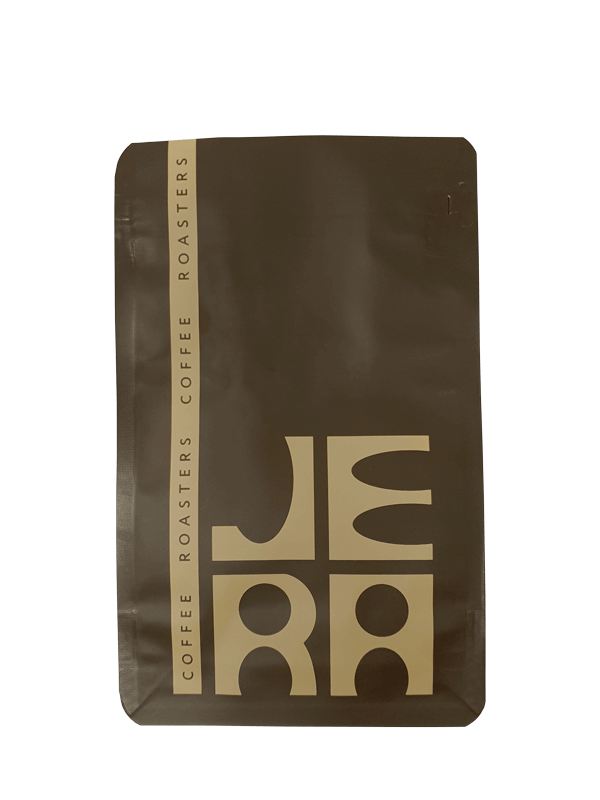קפה ברזילאי | Sul de Minas
קפה ברזילאי ייחודי
גוף רך ומאוזן, חמיצות נמוכה, מרירות מאוזנת, מתיקות גבוהה. טעמים של שוקולד חלבי, וניל ופקאן. מיצוין להכנת אספרסו, מקינטה, קפה שחור או משקאות בסיס חלב
זה התחליף הזמני לברזיל מוקה קרקוליטו שאמור לחזור למלאי באביב.
ברכישת כל סוגי קפה קלוי בסכום:
בין 600 ש"ח ל-1000 ש"ח עם קוד קופון "15%" תקבלו 15% הנחה
בין 1001 ש"ח ל-1500 ש"ח עם קוד קופון "25%" תקבלו 25% הנחה
מעל 1501 ש"ח עם קוד קופון "30%" תקבלו 30% הנחה
₪48.00 – ₪190.00
בְּרוּזִיל סוּל דֶה מִינַס
במדרונות סֶרָה דוֹ פָּאוּ דֶ'אָלְיוֹ, סמוך לנהר קָאבּוֹ וֵרְדֵה, שוכן אחד מאזורי גידול הקפה הוותיקים ביותר בברזיל. גידול הקפה באזור זה, סביב הגבעות השקטות של הר מיראנטה, החל עוד בסוף המאה ה-18. כיום, קהילה קטנה של מגדלים — צאצאים של הפָאזֶנְדֵרוֹס המקוריים — ממשיכים במסורת רבת השנים, ומגדלים אחד מסוגי הקפה המאוזנים ביותר בברזיל, בגבהים שבין 1000 ל-1200 מטרים.
הקפה נודע באיזון המצוין שלו, עם גוף בינוני ומתיקות עדינה ואלגנטית. כ-60% מהצמחים שגדלים באזור משתייכים לזן הקלאסי מוּנְדוֹ נוֹבוֹ, כ-30% הם קָטוּאָי, והשאר כוללים בוּרְבּוֹן ומספר זנים נוספים.
קפה מברזיל
ברזיל שומרת על מעמדה כמובילה העולמית בייצור קפה במשך יותר מ-150 שנה, ואחראית
לכשליש מתפוקת הקפה העולמית הכוללת.
בברזיל מגדלים כ-80% ערביקה וכ-20% רובוסטה. אזורי הגידול המרכזיים של ערביקה הם המדינות מינאס ז'ראיס וסאו פאולו, שמחולקות לאזורים גאוגרפיים קטנים יותר: סול דה מינאס, סרדו ומוג'יאנה. את הרובוסטה מגדלים בעיקר במדינות אספיריטו סנטו ורונדוניה.
שיטות העיבוד הנפוצות ביותר בברזיל הן עיבוד טבעי (יבש) וסמי-וושד (חצי רטוב). שיטות אלה תורמות לרמת מתיקות גבוהה ולגוף עשיר ומלא של הקפה.
באופן כללי, הקפה הברזילאי מתאפיין ברמת חמיצות נמוכה עם טעמי שוקולד ואגוזים דומיננטיים.
עיבוד קפה בשיטת סֶמִי-וָואשְד (פּוּלְפְּד נֵייטְשְרַל)
שיטת הסמי-וושד היא טכניקת עיבוד שבה קליפת הדובדבנים מוסרת תחילה, ולאחר מכן גם הריר (mucilage) מוסר באופן מכני באמצעות מכשיר מיוחד הנקרא דֶמוּסִילַאגֶ'ר.
המכשירים הללו הופכים את עיבוד הקפה ליעיל וידידותי יותר לסביבה — אך הם גם יקרים מאוד, ולעיתים עולים עשרות אלפי דולרים, מה שמקשה על חוות קטנות להשתמש בהם.
הסרה מכנית של הריר מאפשרת קבלת פולים באיכות גבוהה תוך צמצום הפגיעה בסביבה. כתוצאה מכך, שיטה זו הופכת לפופולרית יותר ויותר.
קפה שמעובד בשיטה זו משלב את המתיקות הבולטת האופיינית לעיבוד הטבעי (יבש), עם גוף קל יותר, המזוהה עם קפה בעיבוד רטוב.
באופן כללי, קפה בעיבוד סמי-וושד מתאפיין בחמיצות מעוגלת יותר — פחות הדרית ויותר שוקולדית — ומשיג איזון בין בהירות לעושר.
Brazil Sul De Minas
Nestled on the slopes of the Serra do Pau d’Alho, close to the Cabo Verde river, lies one of Brazil’s oldest coffee-producing regions. Coffee cultivation in this area, around the peaceful hills of Mount Mirante, dates back to the late 18th century. Today, a small community of growers — descendants of the original fazenderos — continues this long-standing tradition, producing one of the most balanced Brazilian coffees, at altitudes ranging from 1000 to 1200 meters.
The coffee is known for its excellent balance, with a medium body and a refined, delicate sweetness. Around 60% of the plants grown here belong to the classic Mundo Novo variety, approximately 30% are Catuai, and the rest include Bourbon and several other cultivars.
The Pergamino lot is composed of carefully selected cherries from two key stages: the initial harvest, which begins in May, and the main harvest that typically takes place from June to July.
Coffee of Brazil
Brazil has held the leading position in global coffee production for over 150 years, accounting for about one-third of the world's total coffee output.
In Brazil, approximately 80% of the coffee grown is Arabica and 20% is Robusta. The main Arabica-producing regions are the states of Minas Gerais and São Paulo, which are further divided into smaller geographic zones: Sul de Minas, Cerrado, and Mogiana. Robusta is primarily cultivated in the states of Espírito Santo and Rondônia.
The most common processing methods in Brazil are natural (dry) and pulped natural (semi-washed). These methods contribute to the coffee's high sweetness and rich, full body. Overall, Brazilian coffee tends to have low acidity with dominant flavor notes of chocolate and nuts.
Semi-Washed (Pulped Natural) Coffee Processing
The semi-washed method is a processing technique when coffee cherries are first stripped of their outer skin and then have their mucilage mechanically removed using special equipment called a demucilager.
Demucilagers make coffee processing more efficient and environmentally friendly — but they’re also quite expensive, often costing tens of thousands of dollars, which makes them inaccessible to the small farms.
Mechanical mucilage removal allows for higher quality beans while minimizing the environmental impact. As a result, this method is becoming increasingly popular.
Coffee produced with the semi-washed method combines the pronounced sweetness typical of natural (dry) processing with the lighter body associated with washed beans.
In general, semi-washed coffee offers a more rounded acidity — less citrusy, more chocolatey — striking a balance between brightness and richness.










